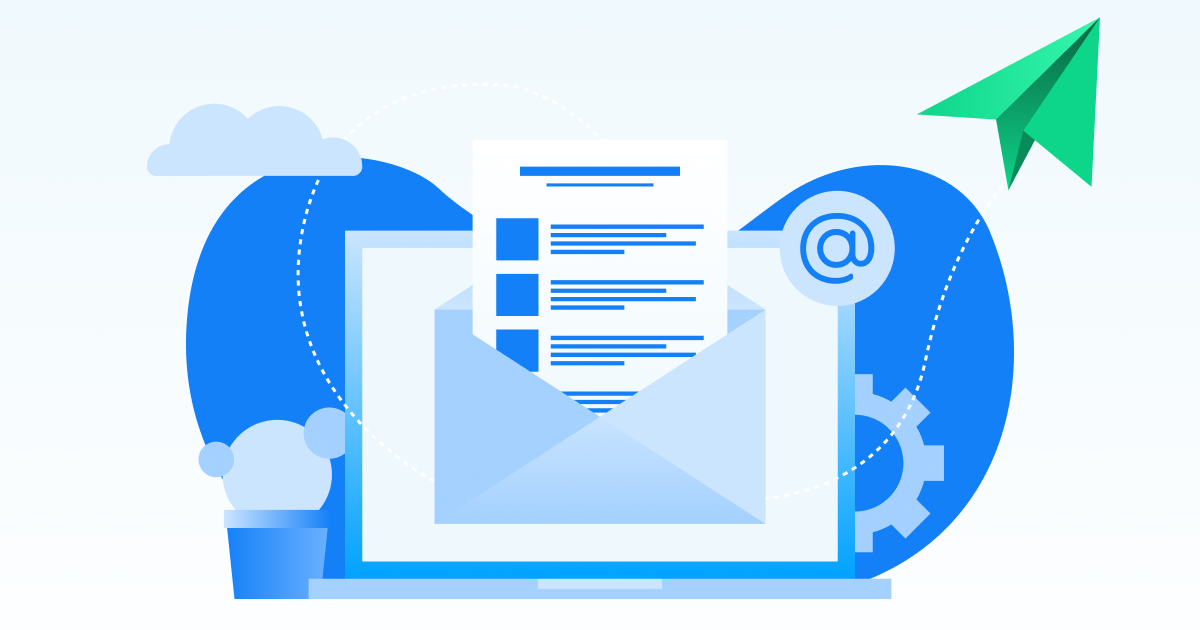
Wouldn't it be weird if you checked into a hotel and there is no one to tell you where to go, what to do, or just greet and feel welcomed? It certainly would be. You would not form a positive image or have any emotions for the place.
The same might happen if you invite people to subscribe to your emails and then don't welcome them. Apart from just psychological reasons, a welcome email is also helpful for your business in moving people from free to trial, get them to download the app, nudge them to buy from you, tell your story, and attract the right audience with your core values.
So, in this article, we aim to tell you what's a welcome email, how it can help you in managing and engaging your list and give you 12 examples of engaging welcome emails.
A welcome email is the first email a subscriber receives after they become a part of an email list by subscribing to a newsletter, downloading a lead magnet, or signing up for a discount.
When should you send it?
Send it immediately after someone signs up to be part of your list. Don't wait for an hour or a day. Welcome emails have the highest engagement rate when sent immediately.
How to send it?
To send a welcome email, brands use automated workflows. This reduces any manual task of checking who joined the list and then sending the welcome email. All major email marketing service providers will provide this functionality. SendX is one of them.
Increased engagement
Welcome emails generate 4x more opens and 5x more clicks than regular emails. Even if you offer a heavy discount, your regular promotional or content emails might not get such a high engagement.
High engagement is because 74% of the people who sign up for a newsletter or give their email expect to receive a welcome email. (source). They want assurance that they are actually part of the list now and are eager to check out the content you will share.
As a bonus, you can include your IG or Twitter handles in the welcome emails to get your email subscribers to keep in touch with you on social media. (double engagement!)
Setting expectations and delivering on the promise
A welcome email can be used to inform subscribers what they can expect from further emails and at what frequency can they expect those.
If you promised to give something to subscribers on signup (a free PDF, discount, link to a video, access to a free course are some of the examples), a welcome email should contain that.
Welcome email should also include a brief about what is your company all about, what are your values and how your products or services can help the subscribers.
Segmentation opportunity
Since a welcome email is opened by maximum people in your list, it's a chance to ask your subscribers any questions or fill up a survey to segment them into categories.
Segmenting your list will help deliver relevant content to your audience since not every type of subscriber will have the same interests or needs.
We went through our inbox and even signed up for a lot of newsletter and product pages to receive a variety of welcome emails and analyze what's engaging and great about each one.
Here's a round of the 12 emails we found worth looking at & also analyzed what you can learn from each one of them.
1) Airbnb welcome email
Airbnb is a platform where you can rent your place to a traveler or travelers can book a place to stay while traveling. We received this email after signing up on the platform as a new user.

Takeaways:
2) Allbirds welcome email
Allbirds is a company that designs and sells footwear and apparel made out of natural materials. We received this email after signing up for the Allbirds newsletter.

Takeaways:
3) Evernote welcome email
Evernote is a note-taking app. We received this email after signing up for their free account.

Takeaways:
4) Harry's welcome email
Harry's is a company selling men's grooming products in retail stores and online. We received this email after signing up for their newsletter.

Takeaways:
5) Trello welcome email
Trello is a project management tool. It comes in the category of SaaS tools. Here's the email we received after signing up for their free plan:
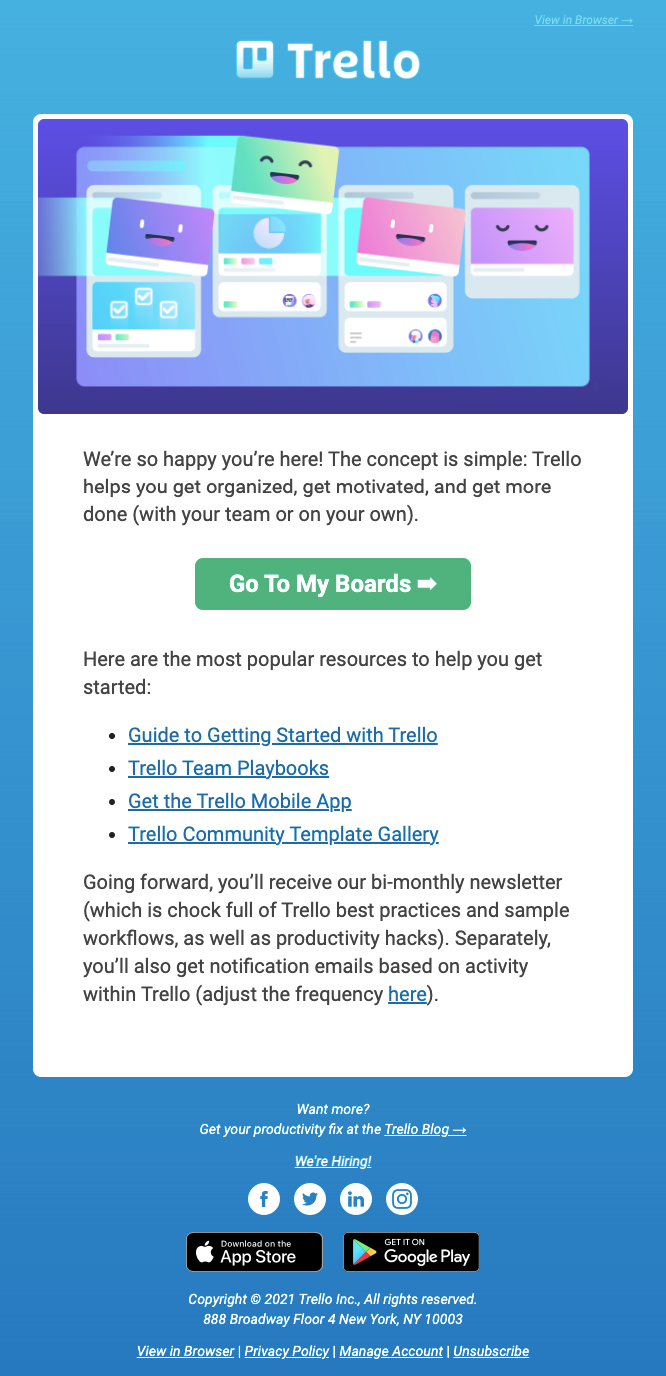
Takeaways:
6) Typeform welcome email
Typeform is a tool that allows you to run online surveys. This is the email we received after we signed up for the free account and confirmed our email.

Takeaways:
7) Wistia welcome email
Wistia is a video hosting platform. We received this email after signing up for the free account.
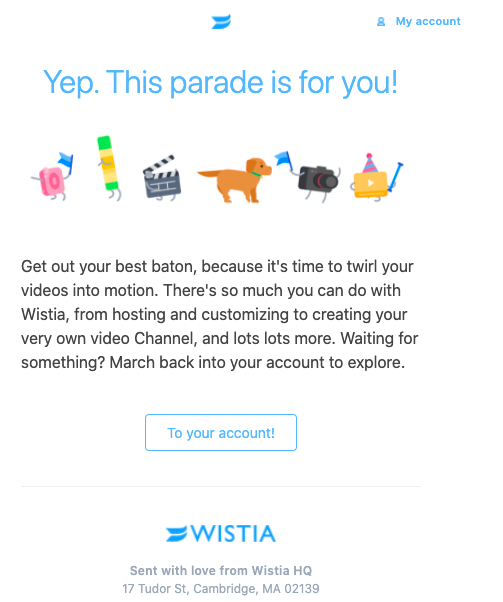
Takeaways:
8) Headspace welcome email
Headspace is a popular meditation and sleep app. This is the welcome email you receive on first signing up on their app or website.

Takeaways:
9) Birchbox welcome email
Birchbox is a beauty products' subscription company. They curate subscription boxes using products from different brands. We received this email after we signed up on a popup offering $5 off on the first box we ordered from them.
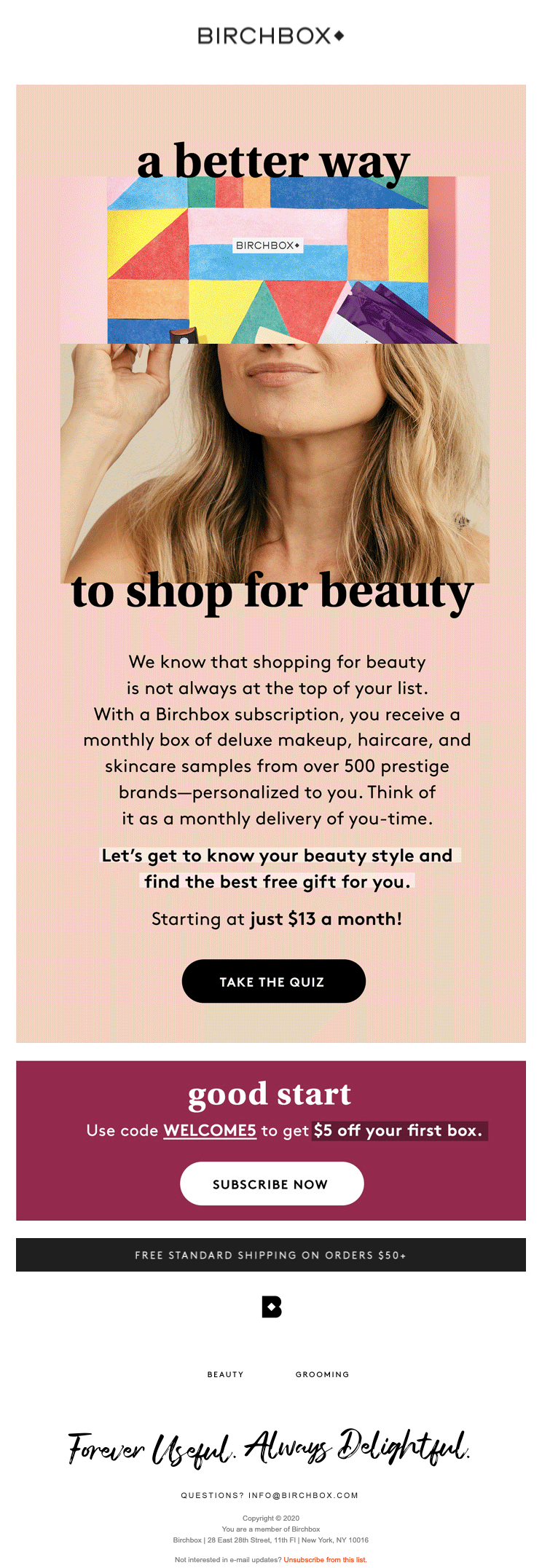
Takeaways:
10) Grammarly welcome email
Grammarly is a cloud-based writing assistant that checks your writing for grammar, spellings, punctuations, etc. We received this welcome email after we purchase.
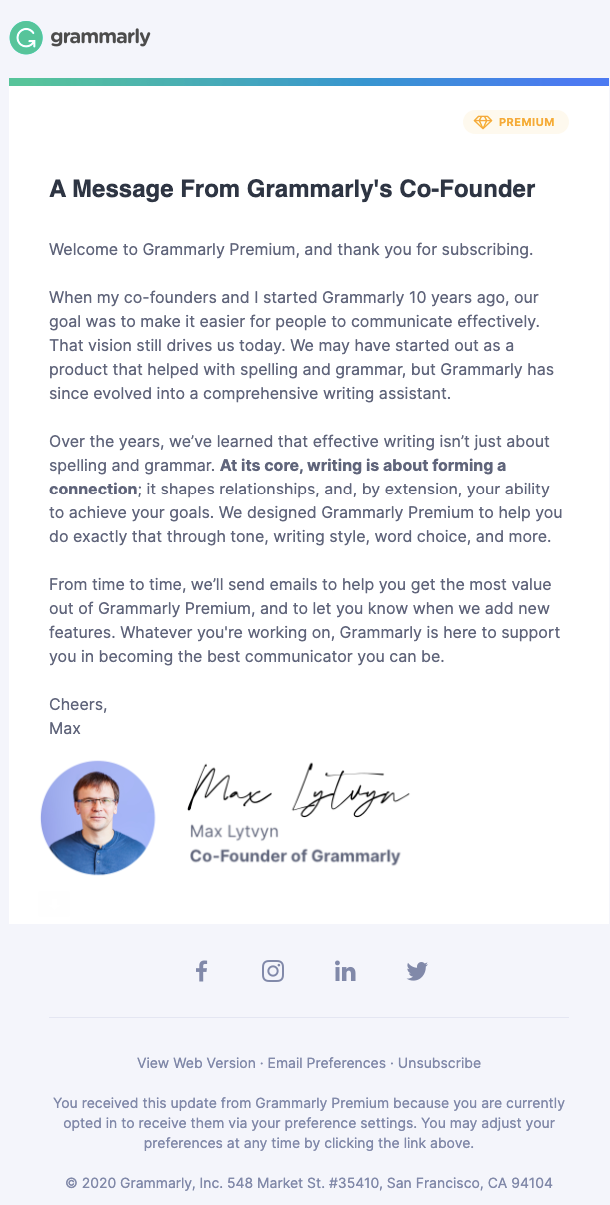
Takeaways:
11) Homage welcome email
Started in 2007, homage is a clothing company.

Takeaways:
12) Reformation welcome email
Reformation is a women's clothing brand. We received this email after signing up for their newsletter.

Takeaways:
From all of the welcome emails we have analyzed above, it's clear that your welcome email doesn't have to be pushy and it has to show your brand's best version to subscribers. Here are some themes that have emerged and are helpful to be included in your welcome email:
A welcome email is an important step in an engaging customer journey so make sure you have one implemented. If you want to get started, SendX can help you with an intuitive email editor and automation functionalities. The best part, you can try it for free for 14 days, without a credit card.